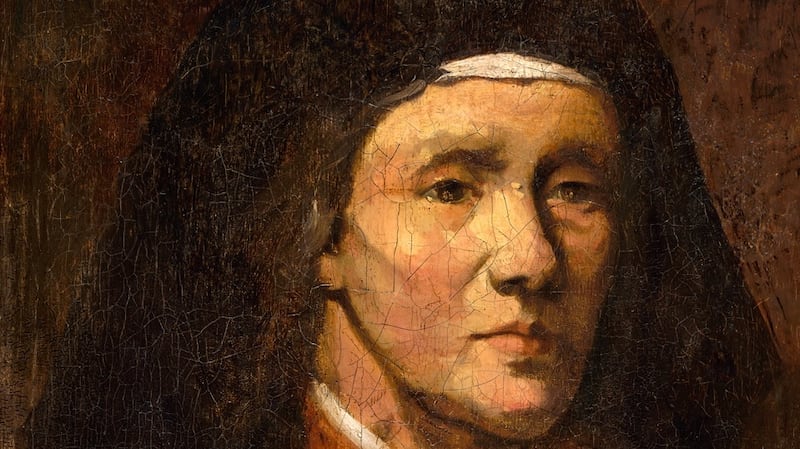The Last Nuns in Ireland, a documentary on RTÉ1 to be broadcast on Tuesday at 10.15pm, explores the lives and legacy of nuns in Irish society. Against a backdrop of falling vocations, rising age profiles and recent controversies, convent-educated broadcaster and journalist Dearbhail McDonald examines the role played by nuns in Ireland from early history to the present day.
She looks at how they shaped Irish lives and includes interviews with several nuns who reflect on their own perceptions of their legacy in contemporary Ireland and the impact of church scandals on their faith and vocational lives. McDonald asks whether these really are “the last nuns in Ireland”?
Included will be interviews with historians, this writer included, who reflect on the role of nuns in Ireland over the centuries. We think of figures such as St Brigid in the fifth century or, more recently, Nano Nagle, founder of the Presentation Order in the 18th century and Catherine McCauley, who established the Sisters of Mercy in 1831.

In the intervening centuries, countless Irish women dedicated themselves to the religious life. As part of my research I examined the extraordinary challenges they faced, including oppression, persecution and exile, especially during the 16th and 17th centuries, a time of unprecedented conflict and disruption in Ireland and throughout Europe. In Ireland, big revolts wrought chaos during the second half of the 16th century followed by the Cromwellian campaigns (1649-1653) and the Williamite wars (1688-1691).
I have given up on self-improvement for 2026. I will be the same lumpen, bad tempered hobgoblin
How to get extra holiday days for nothing, and 10 other ways to save money on travel in 2026
If you earn more than €20,000 you will now have to pay into a pension scheme
Top stories of 2025: Eight ways life has changed since I stopped drinking in 2022
A big driving force in these conflicts was religion. The Protestant Reformation in the 16th century had profound and long-term ramifications for European society as a whole and Irish nuns were not immune. For them the biggest impact was the dissolution of the monasteries which also involved the wholesale closure of convents across the island in 1539, as decreed by King Henry VIII. It meant women could no longer pursue a religious vocation in Ireland.
But the religious flame was not quenched. From the later decades of the 16th century, Irish women wishing to become nuns travelled to the Continent, where they joined European and English convents. Among the earliest was Wexford native Martha Cheevers (Sr Martha Mariana), professed at the English Poor Clare monastery of Gravelines, France in 1620. Soon she was joined by six other Irish recruits, including Eleanor and Cecily Dillon, daughters of the wealthy Theobald Dillon, first Viscount Dillon of Costello-Gallen (died 1624).
In 1629 this small cohort of Irish Poor Clare nuns established the first female religious foundation in Ireland in a century at Merchants Quay in Dublin. However, not long afterwards this convent was raided with the nuns ordered to disband, leave the city and to give assurances not to assemble together again. Within a year, they had regrouped, this time on the rural banks of Lough Ree on land owned by the wealthy Dillon family of Costello-Gallen.
Patronage and protection by elite Catholic families such as the Dillons meant that by 1649 there were ten Poor Clare convents in Ireland, including at Drogheda, Waterford, Wexford and Galway. The 1640s also witnessed the introduction to Ireland of communities of Augustinian, Carmelite and Dominican nuns.
The Williamite wars in the 1680s dealt them yet another blow as Catholic nuns and priests were again compelled to quit the kingdom
The Cromwellian campaigns had devastating implications for Irish society as a whole, including nuns. In January 1653 Cromwellian authorities commanded all nuns to “marry or quit the kingdom”. The majority of Irish nuns left for Catholic Europe and were admitted to communities in Spain and France. Most never returned home. A smaller number remained in Ireland where they lived in hiding, sheltered by family members.
Their numbers fell drastically as the infrastructure and wealth underpinning Catholicism in Ireland was eradicated. The Williamite wars in the 1680s dealt them yet another blow as Catholic nuns and priests were again compelled to quit the kingdom. This continued in the early 18th as the imposition of penal legislation against Catholic practice escalated.
But the tide began to turn and by 1829 Catholic Emancipation paved the way for a large growth in numbers of religious foundations for women, far exceeding anything that would have been imaginable in the preceding centuries. During the 16th and 17th centuries there were many occasions when people might have asked whether they were seeing the last nuns in Ireland. But overseas migration to Catholic Europe offered an opportunity for Irish women to keep the religious flame alive.
In 21st-century Ireland, that migration is in the opposite direction as communities of nuns here, faced with dwindling recruits at home, welcome new members from Africa and Asia, regions where Catholicism continues to flourish.
Are these the last nuns in Ireland? Only time will tell.
Dr Bronagh Ann McShane is Research Fellow at the School of Histories and Humanities, Trinity College Dublin, and author of Irish Women in Religious Orders, 1530-1700: Suppression, Migration and Reintegration (Woodbridge, 2022).
The Last Priests in Ireland is on RTÉ1 on Monday at 9.35pm, followed on Tuesday, at 10.15pm, by The Last Nuns in Ireland













